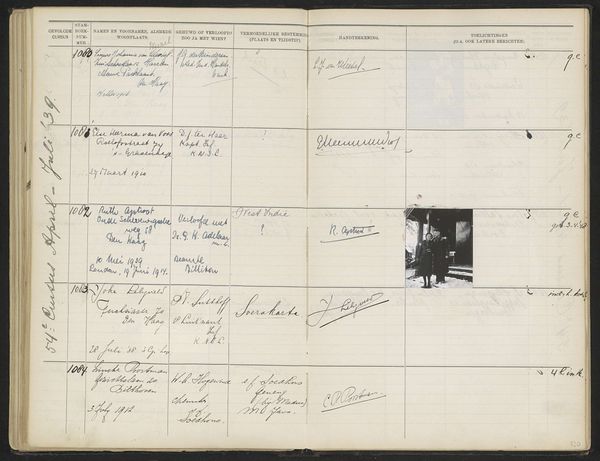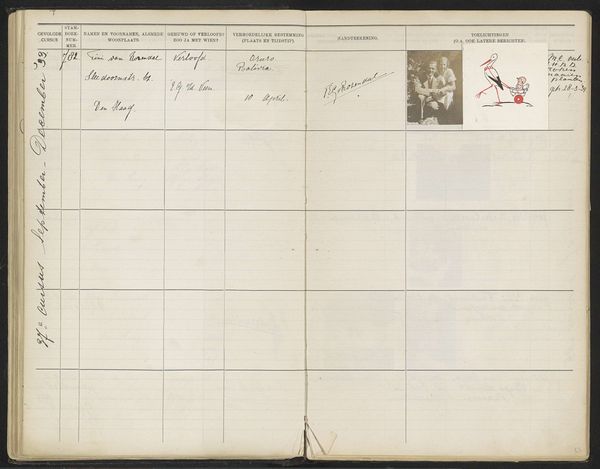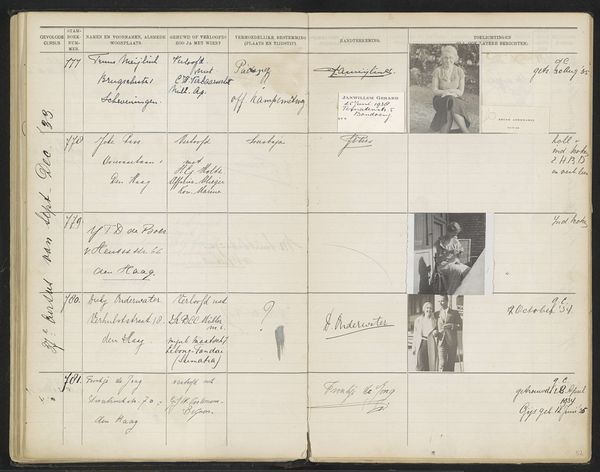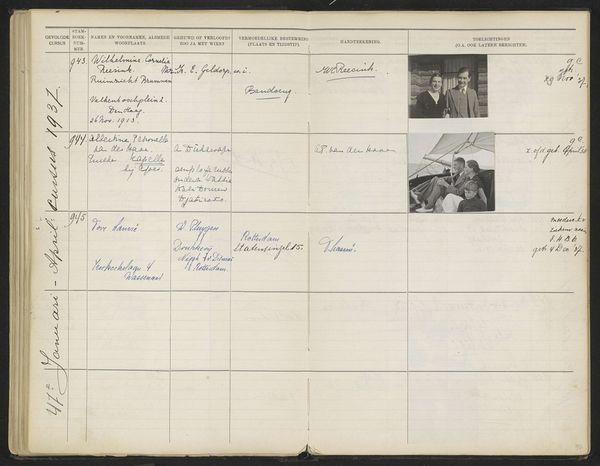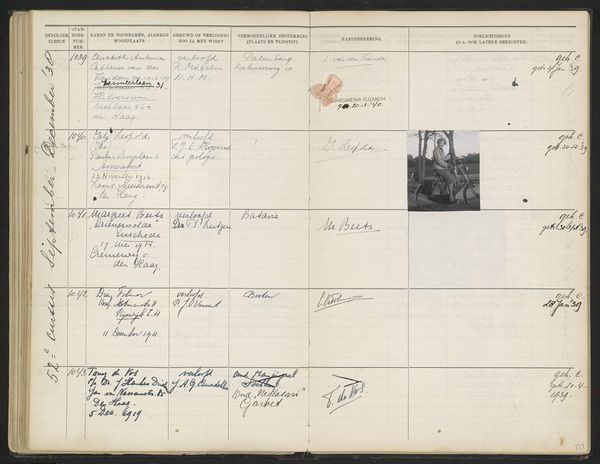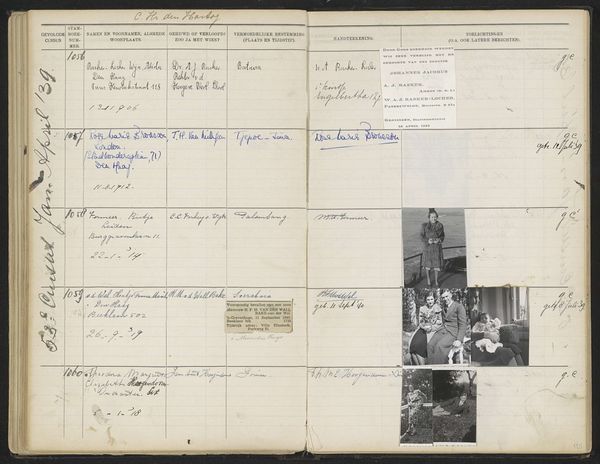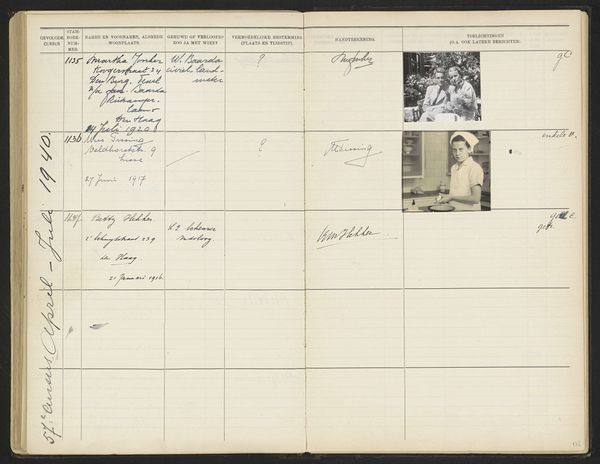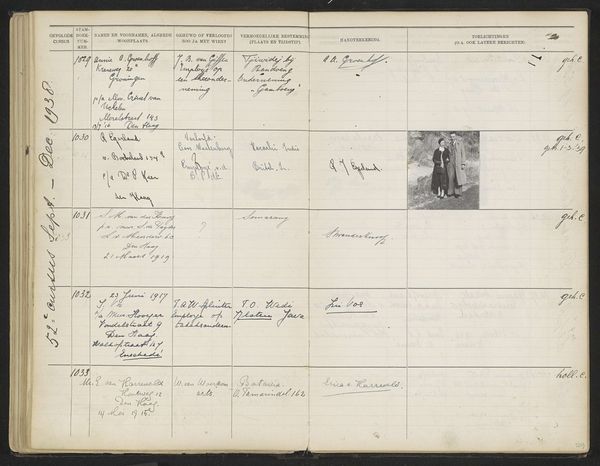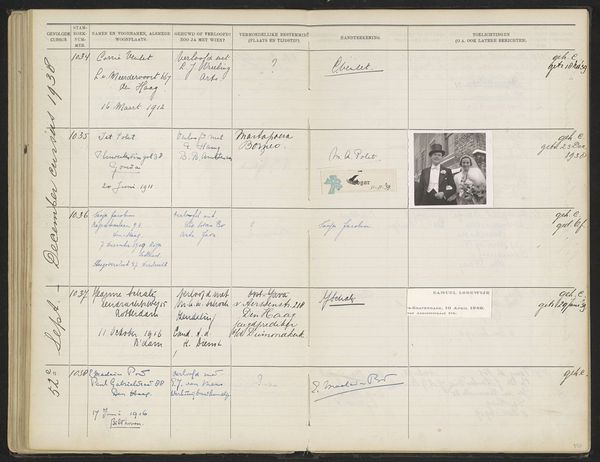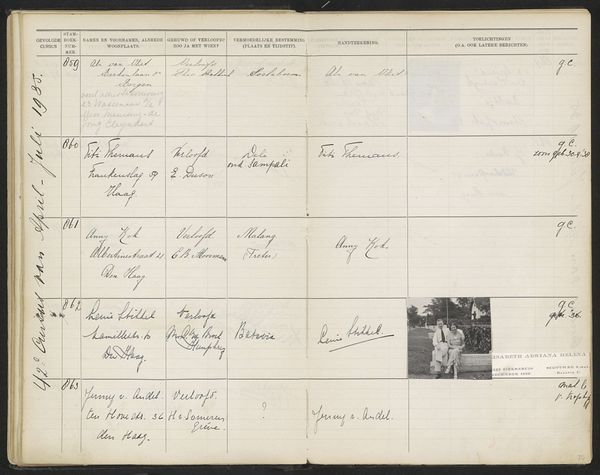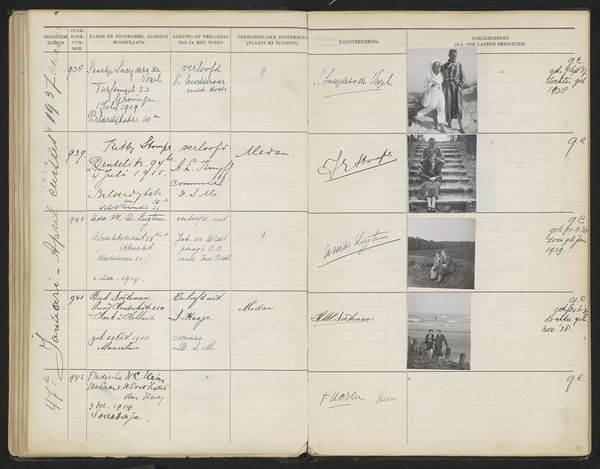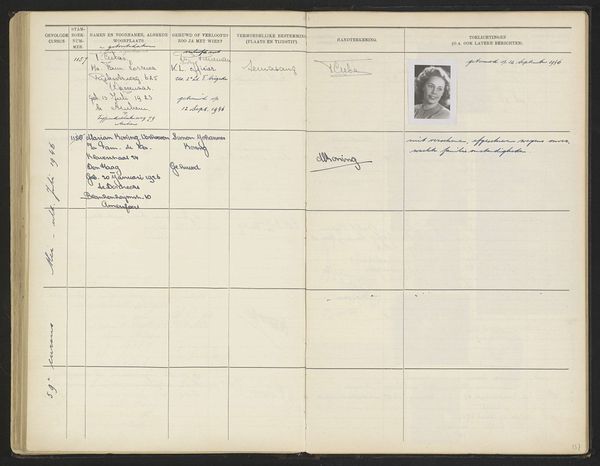
Blad 101 uit Stamboek van de leerlingen der Koloniale School voor Meisjes en Vrouwen te 's-Gravenhage deel II (1930-1949) Possibly 1937 - 1939
0:00
0:00
drawing, paper, photography
#
portrait
#
drawing
#
aged paper
#
sketch book
#
hand drawn type
#
paper
#
photography
#
personal sketchbook
#
hand-drawn typeface
#
pen-ink sketch
#
pen work
#
sketchbook drawing
#
storyboard and sketchbook work
#
sketchbook art
Dimensions: height 337 mm, width 435 mm
Copyright: Rijks Museum: Open Domain
Curator: Here we have a page, specifically Blad 101, from a register, "Stamboek van de leerlingen der Koloniale School voor Meisjes en Vrouwen te 's-Gravenhage deel II (1930-1949)." It seems to date from between 1937 and 1939. It’s a fascinating object rendered with pen and ink on paper, incorporating photography as well. Editor: Wow, this hits me right in the melancholy. That faded paper, the handwritten entries, and those tiny vintage photographs... it all speaks of a time so distant yet somehow still present. It's like looking at ghosts captured on the page. Curator: Yes, these documents carry immense cultural memory. Each handwritten entry, meticulously recorded, tells a story of individual aspirations within a specific colonial context. Even the hand-drawn typeface contributes to a sense of formality and the significance of record-keeping. Editor: Those two small photos are intriguing, aren’t they? One woman holds a child, maybe about to depart. The other shows a man seemingly isolated by his work in this unnamed place. It's almost as if those stark contrasts, juxtaposed within this administrative document, reveal layers of unseen lives. Curator: Absolutely. Consider the symbolic weight of the images: A mother with her child embodies continuity, perhaps suggesting a hopeful future for a life uprooted; the man with his labor, maybe alludes to obligation or survival through occupation of resources from this place? These were powerful images associated with their place, both physical and psychological. Editor: So what do you suppose this register holds about cultural exchange? Was it really for colonial interests alone, or can you see a sense of humanity, perhaps hidden within the rows and dates, of how the students viewed it themselves? I almost wonder what some doodles or other additions not on the official roster might imply? Curator: Precisely, and what could be more evocative than the power of paper? We find hand-drawn typeface, photographs, portraiture… everything conspires to place individual histories within the frame of larger social and cultural narratives, yet leave you questioning the entire premise of the document itself! Editor: This makes me want to grab my own sketchbook, filled with memories of the day. Looking through their records somehow creates empathy. It invites me to re-evaluate my connection to history, like finding an old map and dreaming of the place it points towards.
Comments
No comments
Be the first to comment and join the conversation on the ultimate creative platform.
